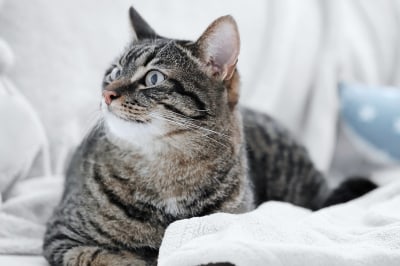Poor dental health can lead to a lot of pain in cats. The majority of cats develop some dental disease by the age of 3, gingivitis being one of the most common types as the beginning stage of periodontal disease. In this article, our Oklahoma City vets share some symptoms, causes, and treatments of gingivitis in cats.
Feline Gingivitis
Gingivitis is a condition in which the gums or gingiva surrounding the teeth become inflamed. This disease can be mild or severe, and cats with gingivitis may experience discomfort and difficulty eating. To treat the condition, a tooth cleaning procedure with anesthesia is required. Plaque, a collection of germs, debris, dead skin cells, mucus, and food, can accumulate on the teeth and cause this dental problem, just as it does in humans.
Causes of Gingivitis in Cats
Some common causes of gingivitis in cats may include:
- Crowded teeth
- FeLV (Feline Leukemia Virus)
- Autoimmune diseases
- Old age
- Soft food
- Bad dental care
Symptoms of Gingivitis in Cats
Common signs of gingivitis in cats can include:
- Plaque build-up
- Bad breath
- Drooling
- Difficulty picking up toys
- Calculi/tartar
- Difficulty eating
- Not eating at all
- Red or swollen gums
Diagnosing Gingivitis in Cats
Cats are adept at concealing their pain, making it difficult to determine whether they are experiencing oral pain. Even if your cat has severe dental disease, they may appear normal to you, eating and being active.
That's why taking your cat for regular check-ups with the vet is essential; it can detect any indications of dental problems. Vets are proficient in recognizing signs of conditions by examining animals and checking for the symptoms mentioned above.
How to Treat Gingivitis in Cats
Gingivitis treatment aims to eliminate accumulated plaque and dental calculus, as well as treat or extract any destabilized and/or diseased teeth. Regular tooth cleanings and dental X-rays conducted under anesthesia are recommended to address any inflammatory dental diseases. Cats with stomatitis may require tooth extraction by a veterinarian to help manage their condition and ensure a comfortable mouth.
The frequency of dental checkups for your cat will depend on the severity of their periodontal disease. If your adult cat has overcrowded teeth or still has baby (deciduous) teeth, your vet may suggest tooth extraction. Your veterinarian will also guide you on brushing your cat's teeth, and you should schedule follow-up exams as recommended.
Caring for Your Cat's Oral Health
You can find toothpaste and brushes specifically designed for cats at most pet supply stores. Gradually introduce your cat to toothbrushing to get them used to it and prevent gingivitis.
Make Your Cat Comfortable With Toothpaste & Toothbrushes
Leave treats near the toothbrush and toothpaste to associate them with positive experiences. Introduce toothpaste slowly by placing a small amount on your finger and letting your cat lick it off.
Getting Your Cat Used to You Touching Their Mouth
Choose a dental treat your cat enjoys and apply it to their canine teeth. As they become accustomed to it, they begin to insert it deeper into their mouth and onto their teeth. This gets them used to you touching their mouth, making it easier to introduce toothpaste.
Brush Your Cat's Teeth
Brushing your cat's teeth should become easier as they become accustomed to you touching their mouth and the sensation of a toothbrush and toothpaste. Brush their gum line, concentrating solely on the outer surface of their teeth. Do this for 15 to 30 seconds, and then give them a treat as a reward.
Note: The advice provided in this post is intended for informational purposes and does not constitute medical advice regarding pets. For an accurate diagnosis of your pet's condition, please make an appointment with your vet.



